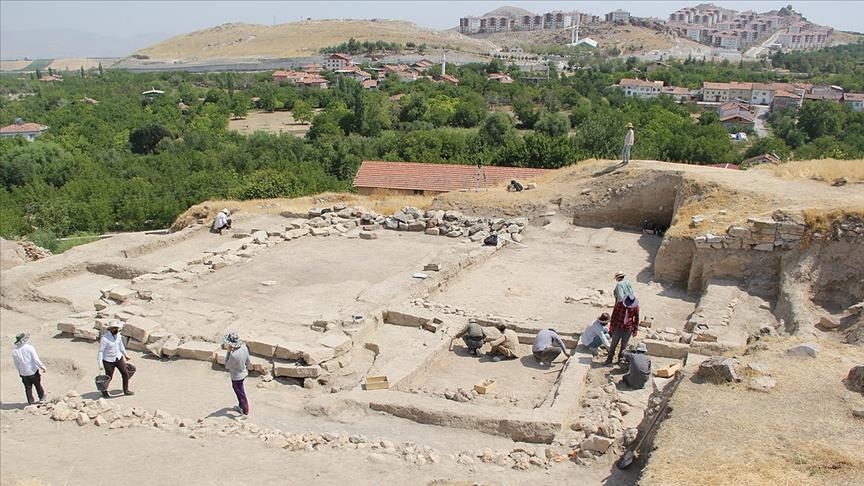
MALATYA, Turkey
Italian archaeologists Thursday hailed a decision to add a 30-meter-high (over 90 feet) archaeological mound in southeastern Turkey to the UNESCO World Heritage List.
The decision to add Arslantepe Mound in eastern Malatya province, dating back some 8,000 years, was taken during the Extended 44th UNESCO World Heritage Committee’s online session in Fuzhou, China last month.
Italian archaeologists have been carrying out excavation work in the region for about 60 years.
Head of the excavation work carried out in Arslantepe Mound, Francesca Balossi Restelli, told Anadolu Agency that the world's first palace and the remains of the first state system were discovered in the region.
“Scientists like us knew this place and its importance, now the world understood the importance of Arslantepe with the recent UNESCO decision,” Restelli said.
Prof. Marcella Frangipane, who retired after working as the head of the excavations in the mound for 30 years, said: “Arslantepe is important for Anatolia, Mesopotamia, and the world.”
“We made an attempt to apply to UNESCO in 2013 to highlight the importance of Arslantepe. I am very pleased as we have achieved a good result after eight years of work,” Frangipane said.
Arslantepe – meaning “Lion Hill” – has been on the UNESCO’s World Heritage Tentative List since 2014.
With the mound, which is among one of Turkey’s earliest religious and civil sites, the number of Turkish sites on the UNESCO World Heritage List reached 19.
The archaeological site of Arslantepe is located on the Malatya plain, five kilometers (three miles) from the city center and 15 kilometers (over nine miles) from the Euphrates River, said UNESCO’s website.
“It is a four-hectare and 30-meter-high archaeological mound dominating the plain and formed by the superimposition of settlements for millennia, from at least the 6th millennium BCE to the late Roman period,” said UNESCO.
The long history of the site, located at the crossroads of the main civilizations of the Near East, reveals crucial events and processes of change in connection with the contemporary developments in Mesopotamia, Anatolia, and the South Caucasus.
More than 50 years of archaeological excavations by Rome’s Sapienza University have brought to light rich material remains of the many civilizations that called the site home, from their formation to their collapse, it added.
The site illustrates the processes which led to the emergence of a state society in the Near East and a sophisticated bureaucratic system that predates writing.
* Writing by Zehra Nur Duz


